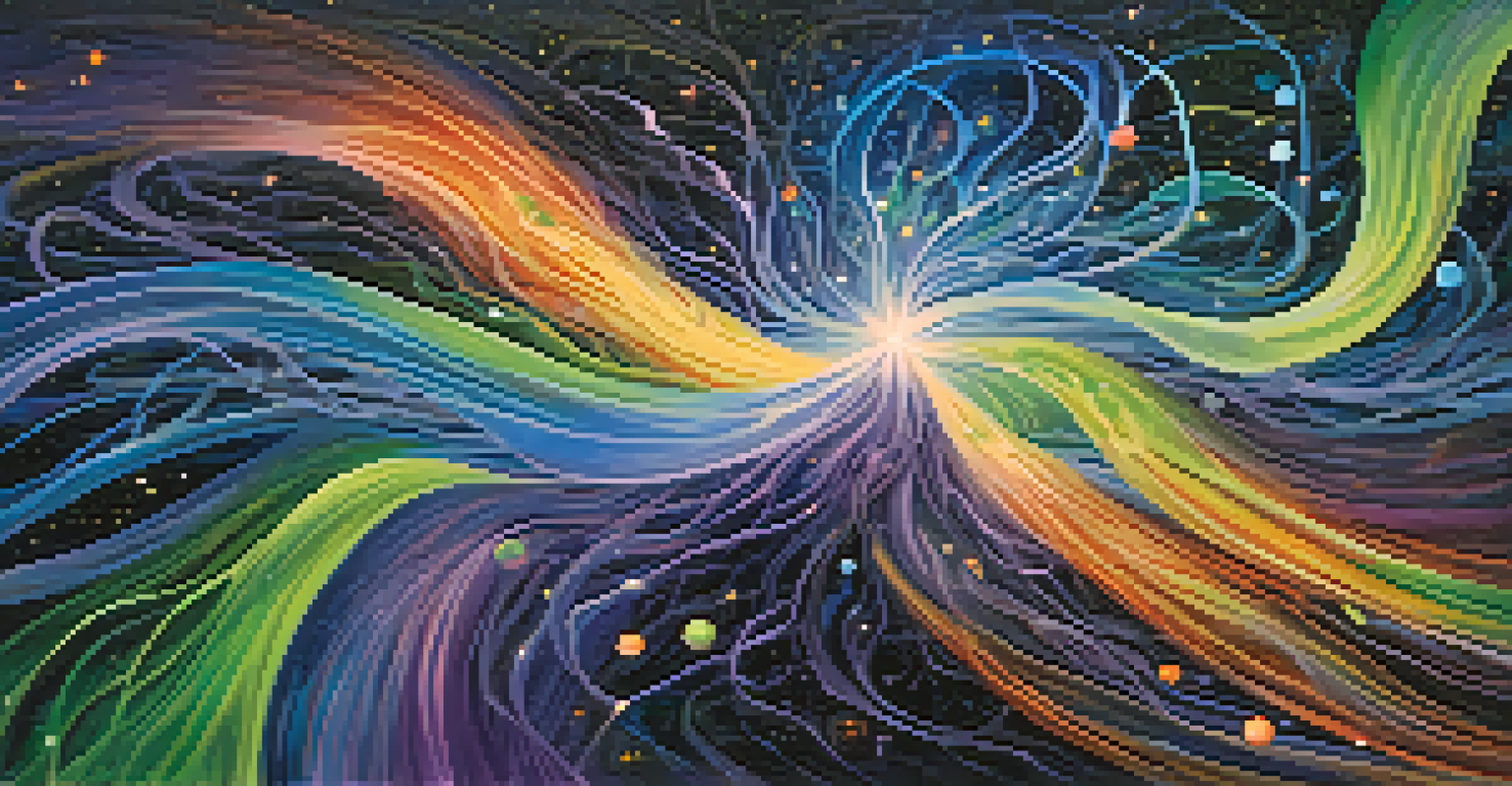Psychedelics and the Quest for Understanding Reality

What Are Psychedelics and Their Historical Context?
Psychedelics are substances that alter perception, mood, and cognitive processes. Historically, they have been used in various cultures for spiritual and healing purposes, dating back thousands of years. From the ancient rituals of the Aztecs with peyote to the use of ayahuasca in Amazonian tribes, these substances have played a significant role in understanding human consciousness.
Psychedelics are not a drug, they are a tool for self-discovery.
In the mid-20th century, psychedelics gained popularity in Western society, particularly among counterculture movements. Figures like Timothy Leary championed their potential to expand the mind and enhance creativity. However, a shift in public perception occurred in the late 1960s, leading to their criminalization and stigmatization.
Today, there is a resurgence of interest in psychedelics, particularly in the fields of psychology and neuroscience. Researchers are beginning to uncover their therapeutic benefits, prompting a reevaluation of their role in society and our understanding of reality.
The Science Behind Psychedelics: How They Work
Psychedelics primarily work by interacting with serotonin receptors in the brain, particularly the 5-HT2A receptor. This interaction can lead to altered states of consciousness, where users may experience vivid hallucinations and a sense of interconnectedness. Essentially, they change the way our brain processes information, which can lead to profound insights about ourselves and the universe.

Studies have shown that psychedelics can promote neuroplasticity, which is the brain's ability to reorganize itself by forming new neural connections. This may explain why people often report lasting changes in mood and behavior after a single psychedelic experience. It’s as though psychedelics create a temporary window to explore aspects of reality that are usually obscured.
Psychedelics Aid Mental Health Treatment
Emerging research highlights the therapeutic potential of psychedelics in treating conditions like depression, anxiety, and PTSD.
Moreover, the use of psychedelics has been linked to increased creativity and problem-solving abilities. Artists, writers, and scientists throughout history have credited these substances for breakthroughs in their work, illustrating the potential of psychedelics as tools for expanding our understanding of reality.
Psychedelics and Spiritual Experiences
Many users report profound spiritual experiences during psychedelic trips, often describing feelings of unity with the universe. This phenomenon has been documented across cultures, suggesting that psychedelics can facilitate deep spiritual realizations and a sense of connection to something greater than oneself. These experiences can challenge conventional notions of reality and self.
The greatest healing therapy is friendship and love.
For example, users might feel as if they are part of a larger cosmic tapestry, where everything is interconnected. This sense of oneness can lead to transformative shifts in perspective, encouraging individuals to reevaluate their beliefs and values. It's as if psychedelics provide a glimpse into the nature of existence itself.
Such experiences often lead to long-term changes in how individuals view their lives and relationships. People may emerge with a renewed appreciation for life, a decrease in fear of death, and an increased sense of purpose, all of which contribute to a broader understanding of reality.
Therapeutic Applications of Psychedelics
Recent studies have highlighted the potential therapeutic benefits of psychedelics in treating mental health conditions like depression, anxiety, and PTSD. For instance, psilocybin, the active compound in magic mushrooms, has shown promise in providing relief where traditional treatments have failed. This resurgence of interest in psychedelics is paving the way for new treatment modalities.
Therapists are beginning to incorporate psychedelics into guided sessions, facilitating deeper emotional exploration and healing. This approach allows individuals to confront difficult emotions and traumas in a supportive environment, fostering breakthroughs in understanding their reality. The combination of therapy and psychedelics creates a unique space for healing.
Integration of Experiences is Key
Successfully incorporating insights from psychedelic experiences into daily life is crucial for maximizing their benefits.
As more research emerges, the potential for psychedelics to revolutionize mental health treatment becomes increasingly clear. They invite us to reconsider our definitions of healing and wellness, pushing the boundaries of what we deem possible in understanding the mind and reality.
The Challenge of Integration After the Experience
While psychedelics can offer profound insights, integrating these experiences into daily life can be challenging. Many users struggle to articulate their experiences or make sense of the insights gained during their trips. It’s like returning from a distant land and finding it difficult to describe the beauty and lessons learned.
Integration involves reflecting on the experience and applying the insights to everyday life. This process can be facilitated through therapy, journaling, or support groups, helping individuals navigate the complexities of their newfound understanding. Without proper integration, the potential benefits of the experience may fade away.
Ultimately, the journey doesn’t end with the trip; it continues as individuals strive to embody the insights gained. This ongoing process allows for a deeper connection to self and reality, fostering growth that lasts long after the psychedelic experience.
Cultural Perspectives on Psychedelics
Cultural attitudes towards psychedelics vary widely, influencing how societies perceive their use. In some cultures, psychedelics are viewed as sacred tools for spiritual exploration, while in others, they are demonized and associated with illegal activity. This dichotomy shapes public perception and policy, impacting access and research.
For example, in indigenous cultures, substances like peyote or ayahuasca are integral to spiritual and healing practices. These communities view psychedelics as gateways to deeper understanding and connection to the spiritual world. In contrast, Western society often stigmatizes their use, focusing on potential abuse rather than their therapeutic value.
Cultural Views Shape Perception
Cultural attitudes towards psychedelics influence public perception and policy, affecting their acceptance and use in society.
As the conversation around psychedelics evolves, there is potential for greater cultural acceptance and understanding. By recognizing the diverse perspectives on these substances, we can foster a more inclusive dialogue about their role in personal and collective exploration of reality.
The Future of Psychedelics in Society
As research continues to unveil the benefits of psychedelics, we stand on the brink of a new era in mental health treatment and personal exploration. The growing acceptance of these substances could lead to changes in legislation, allowing for therapeutic use and potentially recreational use under regulated conditions. This shift may redefine our relationship with psychedelics and their role in society.
Moreover, as more people share their positive experiences, the stigma surrounding psychedelics may lessen. This could pave the way for greater public education and destigmatization efforts, encouraging informed discussions about their use. Just like how cannabis evolved from a controversial substance to a widely accepted therapy, psychedelics may follow a similar path.

Ultimately, the future of psychedelics holds great promise for enhancing our understanding of reality and the human experience. By embracing their potential, we open ourselves to new insights and possibilities that can enrich our lives and deepen our connection to the world around us.